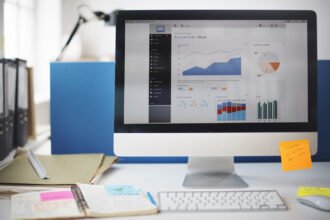Big data is changing the retail industry in remarkable ways. It is possibly the biggest disruptor of the sector of the economy over the past 50 years. There are a number of applications of big data, but one that gets overlooked the most is the benefits of using it for coupons.
Retailers are investing heavily in big data – but is couponing enough of a focus?
Retailers around the world are turning to big data to solve many of their challenges. There are many ways that they have leveraged big data to serve their customers, meet compliance standards and improve relationships with supply chain partners. Here are a couple of the biggest examples:
- Costco started using big data to provide timely warnings to their customers. They worked with a California fruit packing company that had been contaminated with listaria. Instead of reaching out to every customer that had ever purchased from Costco, they were able to identify the specific customers that bought the contaminated products and gave them timely warnings.
- Target used big data to help improve their marketing strategies for expecting mothers. Other retailers frequently use public records to target their advertisements to women that had already had a baby. However, Target realized that they could use big data to get there messages out before their competitors. They would identify shopping patterns and figure out whether a woman was expecting a child or not.
Big data is clearly opening up a number of doors for retailers. They have discovered that they can better serve customers and operate more efficiently. Yet, a surprisingly small number of retailers are taking advantage of the opportunity to use big data for couponing.
Target was smart about using big data to identify shopping patterns of expecting mothers. However, their messages would have been even better if they started using that data to offer coupons to them.
According to CouponsPlusDeals, there are a lot of opportunities for retailers to use big data to improve their coupon strategies. However, they are going to need to be smart about them. Bryan Pearson a retail columnist for Forbes, pointed out that big data can play an important role in using coupons better. Retailers often purchase data and use it to create better marketing strategies. The problem is that they often don’t use the data properly.
Pearson states that the biggest mistake they make is failing to engage with their customers. They have a lot of data that tells them something, but they need to make sure that they are drying the right conclusions. If you target the wrong offers to the wrong customers, then your couponing strategy will be ineffective.
Mike Anthony is another skeptic that warned that big data and coupons need to be used together carefully. He says that the redemption rate is high, but they aren’t helping retailers reach any of their primary branding goals.
This means that retailers are suffering the opportunity cost of lost revenue, without actually having anything to show for it. What should I be doing instead? They should be targeting their coupons to customers of their competitors, rather than sharing them exclusively with their own customer base. Of course, this is much easier said than done. The vast majority of data that they have at their fingertips comes from their own customers. However, if they were able to target lists from other sources and eliminate their own customers from it, then they would be able to preach a new pool of customers and use their coupons and other incentives to capture a larger market share.








